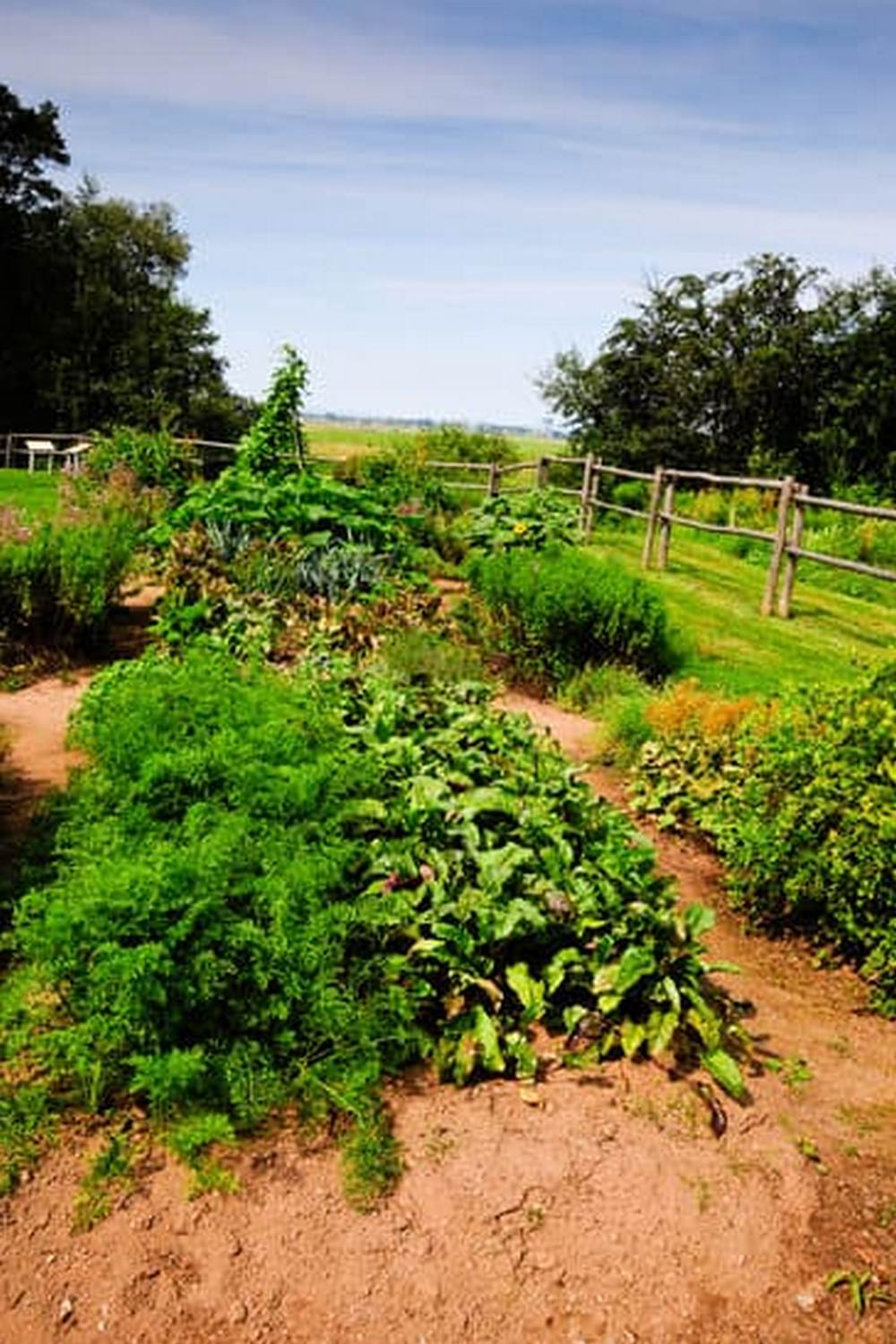Indian vegetable gardening holds a special place in the hearts of many Indians, offering a way to connect with nature and enjoy the bounty of homegrown produce. In this article, we will explore valuable Indian vegetable gardening tips to help you cultivate a thriving garden right in your backyard. From choosing the perfect location to combatting pests and diseases, we’ll cover everything you need to know to grow healthy vegetables in India.
When it comes to Indian vegetable gardening tips, selecting the right location is crucial for successful cultivation. Factors such as sunlight exposure, soil quality, and water availability play a significant role in determining the productivity of your garden. By understanding how these elements impact plant growth, you can create an optimal environment for your vegetables to thrive.
In India’s diverse climate and soil conditions, certain vegetables are better suited for cultivation than others. Understanding which vegetables are well-adapted to the Indian environment will help you make informed choices when planning your garden. By focusing on locally grown varieties that can withstand the region’s challenges, you can increase your chances of a successful harvest.
Choosing the Right Location for Your Vegetable Garden in India
When it comes to Indian vegetable gardening, choosing the right location for your garden is crucial for the success of your plants. One important factor to consider is sunlight. Most vegetables require at least 6-8 hours of direct sunlight per day, so select a spot in your garden that receives ample sunlight. In India, it’s best to choose a location that gets morning sun and afternoon shade, especially during the scorching summer months.
Consider Drainage and Air Circulation
Another key consideration when choosing a location for your vegetable garden in India is drainage. Make sure the area you choose has proper drainage to prevent waterlogging, which can lead to root rot and other issues. Additionally, good air circulation is important for preventing fungal diseases, so avoid planting in areas with poor air flow or where plants are overcrowded.
Urban Gardening Tips
For those living in urban areas in India, space can be a constraint when it comes to vegetable gardening. However, there are creative solutions such as vertical gardening or container gardening that can help you make the most of limited space.
Look for areas such as balconies, rooftops, or even windowsills that receive sufficient sunlight and can accommodate containers or trellises for growing vegetables. With some planning and creativity, urban dwellers in India can also enjoy the benefits of homegrown produce.
By carefully considering factors like sunlight exposure, drainage, and air circulation when choosing the location for your vegetable garden in India, you’ll set yourself up for success in growing healthy and productive plants. Whether you have a spacious backyard or just a small balcony space in an urban setting, with some thoughtful planning and the right techniques tailored to Indian conditions, anyone can enjoy the rewards of growing their own fresh vegetables at home.
Best Vegetables to Grow in Indian Climate and Soil Conditions
In India, the diverse climate and soil conditions provide an ideal environment for growing a wide range of vegetables. Some vegetables thrive particularly well in the Indian climate and soil conditions, making them popular choices for home vegetable gardening.
Popular Vegetables to Grow in Indian Gardens
One of the most popular vegetables to grow in Indian gardens is tomatoes. Tomatoes are versatile, easy to cultivate, and can be grown successfully in various parts of India. Another favorite among Indian gardeners is okra, also known as lady’s finger or bhindi. Okra grows well in warm climates and is a staple in many Indian dishes.
Adaptable Vegetables for Indian Gardens
Carrots are another vegetable that adapts well to the climate and soil conditions of India. With proper care and attention, carrots can be grown successfully in different regions across India. Spinach is also a versatile leafy green that thrives in Indian gardens. It is rich in nutrients and can be harvested multiple times throughout the growing season.
Tips for Growing These Vegetables
When planting tomatoes, ensure they receive plenty of sunlight and regular watering to promote healthy growth. For okra, make sure to plant them in well-draining soil and space them adequately to allow air circulation around the plants. Carrots require loose soil that is free from stones or debris to encourage straight root growth. Spinach prefers moist soil rich in organic matter to thrive.
By choosing the right vegetables suited for the Indian climate and following proper cultivation practices, you can enjoy a bountiful harvest from your home vegetable garden. These popular and adaptable vegetables are not only delicious but also rewarding to grow in your own backyard using traditional Indian vegetable gardening tips.
Soil Preparation and Fertilization Techniques Specific to Indian Vegetable Gardening
When it comes to successful Indian vegetable gardening, soil preparation and fertilization are crucial steps that can make a significant difference in the health and productivity of your crops. Here are some essential tips and techniques specifically tailored for the unique climate and soil conditions in India:
- Test your soil: Before you start planting, it is important to test the pH level of your soil. Most vegetables prefer slightly acidic soil with a pH range of 6.0 to 6.You can easily find pH testing kits at garden centers or consult with agricultural experts for professional testing.
- Organic matter addition: Indian soils are often deficient in organic matter, which is essential for good soil structure and fertility. To improve your soil quality, consider adding compost, aged manure, or other organic materials such as vermicompost. These will not only provide nutrients to your plants but also improve water retention and drainage.
- Fertilization schedule: In Indian vegetable gardening, it is important to follow a proper fertilization schedule based on the specific needs of each crop. Different vegetables require varying levels of nutrients at different stages of growth. Utilize organic fertilizers like cow dung, bone meal, neem cake, or seaweed extracts over synthetic ones for healthier plant growth.
By implementing these soil preparation and fertilization techniques tailored to Indian conditions, you can ensure the success of your vegetable garden and enjoy a bountiful harvest throughout the growing season. Remember that healthy soil is the foundation for healthy plants, so investing time and effort into preparing and nourishing your soil will pay off in the long run.
Watering Tips for Vegetable Gardening in India
Watering plays a crucial role in the successful growth of vegetables in an Indian climate. With hot and dry weather conditions prevailing in many parts of the country, it is essential to provide adequate water to your vegetable garden. Here are some important watering tips for vegetable gardening in India:
- Know your vegetables: Different vegetables have different water requirements. It’s important to research and understand the watering needs of each vegetable you plan to grow in your garden. Some may require more frequent watering, while others may be more drought-tolerant.
- Water deeply: Instead of shallow or frequent watering, it’s recommended to water deeply but less frequently. This encourages the roots of the plants to grow deeper into the soil, making them more resilient during dry periods.
- Early morning or evening watering: Water your vegetable garden early in the morning or late in the evening to minimize evaporation loss. This ensures that the plants receive an adequate amount of water without wasting it due to high temperatures.
In addition to these general watering tips, there are also some specific techniques that can be beneficial for Indian vegetable gardening:
- Drip irrigation: Consider investing in a drip irrigation system for your vegetable garden. This efficient method delivers water directly to the roots of plants, reducing water wastage and ensuring even distribution.
- Mulching: Applying a layer of organic mulch around your plants helps retain moisture in the soil, reducing the frequency of watering needed. Mulching also helps control weeds and regulate soil temperature.
- Monitor soil moisture: Use a moisture meter or simply dig down a few inches into the soil with your finger to check if it’s time to water. Overwatering can be just as harmful as underwatering, so it’s important to maintain a balance based on the specific needs of your vegetables.
By following these watering tips and techniques tailored for Indian vegetable gardening, you can ensure that your homegrown vegetables thrive and produce bountiful harvests throughout the growing season.
Pest Control and Disease Management Strategies for Indian Vegetable Gardens
Pest control and disease management are crucial aspects of maintaining a healthy and thriving vegetable garden in India. One important tip for pest control is to regularly inspect your plants for any signs of pests or diseases. Look out for yellowing leaves, holes in the foliage, or visible insects on the plants. Early detection can help prevent the spread of pests and diseases to other plants in your garden.
In Indian vegetable gardening, using natural remedies and organic pesticides is highly recommended for pest control. Neem oil, garlic spray, and chili pepper spray are effective natural solutions that can help repel common pests like aphids, caterpillars, and beetles. These natural remedies are safe for both your plants and the environment, making them ideal choices for eco-friendly gardening practices.
When it comes to disease management in Indian vegetable gardens, proper plant spacing is key to preventing the spread of diseases. Good air circulation between plants can help reduce humidity levels and minimize the risk of fungal infections.
Additionally, practicing crop rotation and removing any infected plant debris promptly can also help prevent diseases from recurring in your garden. By implementing these pest control and disease management strategies, you can ensure a bountiful harvest of healthy vegetables from your Indian garden.
| Pest Control Tips for Indian Vegetable Gardens | Disease Management Strategies for Indian Vegetable Gardens |
|---|---|
| Regularly inspect plants for pests | Proper plant spacing to prevent diseases |
| Use natural remedies like neem oil and garlic spray | Practice crop rotation to avoid disease recurrence |
| Promote good air circulation between plants | Remove infected plant debris promptly |
Seasonal Planting Guide for Optimal Vegetable Growth in India
When it comes to successful vegetable gardening in India, understanding the seasonal variations and their impact on plant growth is crucial. Different regions of India have varying climate patterns, which can influence the type of vegetables that thrive during different seasons. For example, in northern India, winters can be harsh, while coastal regions experience more humid conditions.
During the summer months in most parts of India, vegetables like okra, eggplant, tomatoes, and peppers tend to do well due to the warm temperatures and longer days. These heat-loving plants require a good amount of sunlight to thrive and produce a bountiful harvest. On the other hand, leafy greens such as spinach, lettuce, and kale prefer cooler temperatures and can be grown during the winter months or in shaded areas during summers.
To ensure optimal vegetable growth throughout the year, planning your planting schedule according to the seasons is essential. By rotating crops based on seasonal requirements, you can maximize your garden’s productivity and minimize the risk of pests and diseases. Additionally, taking into consideration regional climatic conditions when selecting vegetables to grow can significantly improve your overall success rate.
One effective way to plan your seasonal planting guide is by creating a planting calendar specific to your location in India. This calendar should include information on when to start seeds indoors or outdoors, when to transplant seedlings, and when to expect harvestable produce. By following this guide tailored to Indian climates and soil conditions, you can make the most out of your vegetable garden year-round.
| Vegetable | Season |
|---|---|
| Tomatoes | Summer |
| Spinach | Winter |
| Okra | Summer |
Harvesting and Storage Tips for Indian Vegetables Grown at Home
After putting in the hard work of planting, nurturing, and caring for your Indian vegetable garden, it is important to know the best practices for harvesting and storing your produce. Timing is crucial when it comes to harvesting vegetables, as they need to be picked at the right time to ensure maximum flavor and nutrition.
One of the key Indian vegetable gardening tips for harvesting is to check for maturity by looking at the size, color, and texture of the vegetables.
When harvesting Indian vegetables such as tomatoes, eggplants, or okra, it is important to use sharp tools like shears or pruners to avoid damaging the plant. Additionally, make sure to handle the harvested vegetables with care to prevent bruising or spoilage. For root vegetables like onions, potatoes, or carrots, gently lift them from the soil without causing any damage to the roots.
Once you have successfully harvested your Indian vegetables, proper storage techniques are essential to prolong their freshness and flavor. Vegetables like tomatoes can be stored at room temperature away from direct sunlight until ripe and then transferred to the refrigerator to slow down ripening.
Leafy greens should be stored in a breathable bag in the refrigerator crisper drawer with a paper towel to absorb excess moisture. By following these harvesting and storage tips specific to Indian vegetable gardening, you can enjoy a bountiful harvest for longer periods.
Sustainability and Eco-Friendly Practices in Indian Vegetable Gardening
In recent years, there has been a growing awareness about the importance of sustainability and eco-friendly practices in various aspects of life, including gardening. Indian vegetable gardening enthusiasts are also embracing this trend by incorporating environmentally friendly techniques into their garden routines. By following sustainable practices, not only do they contribute to a healthier ecosystem but also ensure the long-term viability of their vegetable gardens.
One key aspect of sustainability in Indian vegetable gardening is water conservation. Given the scarcity of water resources in many parts of India, it is crucial for gardeners to implement efficient watering techniques. Using methods such as drip irrigation, mulching, and rainwater harvesting can help minimize water wastage and ensure that plants receive an adequate amount of water. Additionally, choosing native or drought-resistant vegetable varieties can reduce the overall water consumption in the garden.
Another important consideration for eco-friendly vegetable gardening in India is soil health. Rather than relying on chemical fertilizers that can harm the environment and deplete the soil of essential nutrients over time, many Indian gardeners are turning to organic fertilizers and compost.
These natural alternatives not only enrich the soil but also promote biodiversity and microbial activity, leading to healthier plants and increased resistance to pests and diseases. Furthermore, practicing crop rotation and cover cropping can help maintain soil fertility while reducing the need for synthetic inputs.
In addition to water conservation and soil health, Indian vegetable gardeners are exploring innovative ways to minimize waste and reduce their carbon footprint. Techniques such as vermiculture (using earthworms for composting), companion planting (growing mutually beneficial plant species together), and using recycled materials for garden structures are gaining popularity among sustainability-conscious gardeners.
By adopting these eco-friendly practices, Indian vegetable gardeners can not only enjoy a bountiful harvest but also contribute to a more sustainable future for themselves and their communities.
Success Stories and Tips From Experienced Indian Vegetable Gardeners
In conclusion, Indian vegetable gardening offers a wealth of opportunities for enthusiasts to cultivate fresh produce right at home. With the right knowledge and techniques, anyone can successfully grow a variety of vegetables in the unique climate and soil conditions of India. As highlighted by experienced Indian vegetable gardeners, choosing the right location, selecting suitable vegetables, preparing the soil properly, watering adequately, and implementing effective pest control measures are crucial steps towards a bountiful harvest.
Moreover, learning from seasoned gardeners’ success stories can provide valuable insights and inspiration for those looking to start their own vegetable gardens in India. By following tried-and-tested Indian vegetable gardening tips shared by experts in the field, beginners can avoid common pitfalls and maximize the potential of their garden. These shared experiences create a sense of community among Indian vegetable gardeners, fostering a culture of knowledge exchange and continuous improvement in sustainable gardening practices.
Ultimately, Indian vegetable gardening is not just about growing food but also about connecting with nature, promoting sustainability, and enjoying the fruits of one’s labor. By incorporating eco-friendly practices into their gardening routines and embracing traditional wisdom passed down through generations, Indian gardeners can make a positive impact on the environment while reaping the rewards of a successful harvest.
With dedication, patience, and a willingness to learn from fellow enthusiasts, anyone can embark on a fulfilling journey into the world of Indian vegetable gardening.
Frequently Asked Questions
Which Vegetables Grow Fast at Home in India?
Some vegetables that grow fast at home in India include spinach, radishes, fenugreek, and coriander. These veggies are relatively quick to sprout and mature, making them ideal choices for beginners.
How Do You Prepare Soil for Planting Vegetables in India?
To prepare soil for planting vegetables in India, it is essential to ensure the soil is well-drained and has a good mix of nutrients. Adding compost or organic matter can improve soil structure and fertility, providing an excellent foundation for healthy plant growth.
Which Season Is Best to Grow Vegetables in India?
The best season to grow vegetables in India depends on the region and climate. Generally, the cooler months from October to February are considered ideal for most vegetable crops as they thrive in milder temperatures with less risk of pests or diseases.

If you’re looking to get into vegetable gardening, or are just looking for some tips on how to make your current garden better, then you’ve come to the right place! My name is Ethel and I have been gardening for years. In this blog, I’m going to share with you some of my best tips on how to create a successful vegetable garden.





